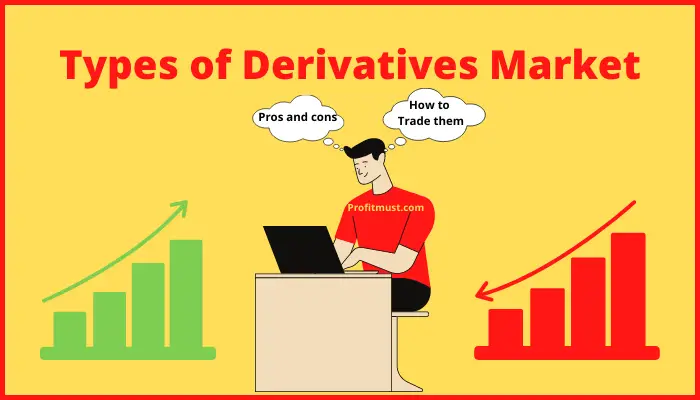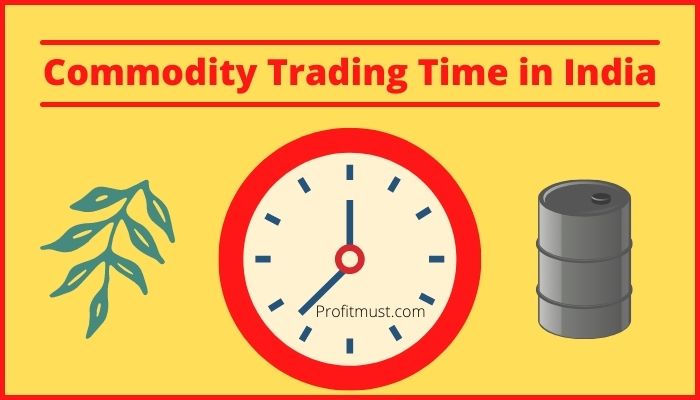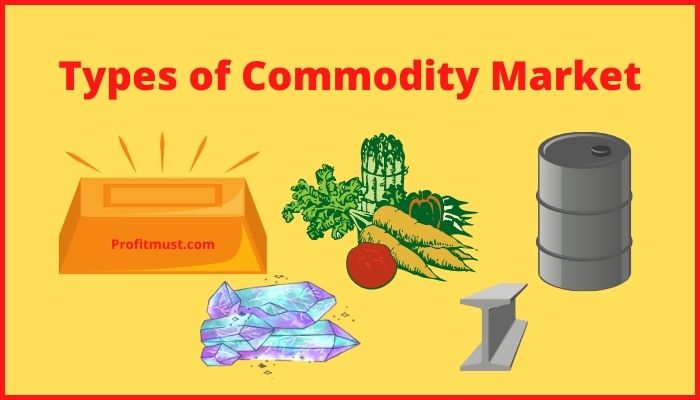Commodity trading has evolved as a profession over time. Furthermore, today’s market has an exceptionally varied range of commodities. Let’s have a look at the Indian commodity exchanges and the different types of commodity market in India.
Table of Contents
Types of Commodity Market
Commodity trading usually takes place in one of two markets: derivatives markets or spot markets.
-
Spot Market
Spot markets, sometimes known as “cash markets” or “physical markets,” are exchanges where traders sell real commodities for quick delivery.
They may be found in practically every major city in India, where major commodities are available for purchase and sale.
-
Derivatives market
Futures and forwards are 2 kinds of commodity derivatives used in derivatives markets; these derivatives contracts use the spot market as the basic asset and provide the owner control of it at a point in the future for a specified price in the present.
The commodity or asset is physically delivered when the contract ends. Forwards and futures vary in that forwards can be customised and traded over the counter, however futures are standardised and exchanged on exchanges.

Globally Most Traded Commodities
After understanding types of commodity market let’s check out most traded commodities. You can trade both hard and soft commodities on the exchanges.
Hard commodities, such as crude oil and metals, have a short shelf life, but soft commodities, such as wheat, soybean, corn, cotton, and other agricultural commodities, have a long shelf life.
Gold, silver, crude oil, Brent oil, natural gas, soybean, cotton, wheat, corn, and coffee are among the most traded commodities worldwide. Here’s some detail about most traded commodities:
-
Crude Oil
Crude oil is among the most valuable commodities on the market. The demand for crude oil is increasing every day, thanks to many byproducts including petroleum and diesel, and particularly due to the surge in demand for automobiles.
Due to the enormous demand, geopolitical tensions have erupted all over the world. OPEC is a group of oil-producing nations, with Saudi Arabia, the United States, and Russia among the biggest producers.
-
Gold
For most folks, gold has always been a safe haven. When the value of the US dollar falls, people begin to buy more gold for security, and when the value of the dollar rises, gold prices tend to decline; the two are inversely related.
-
Soyabean
Soybeans are the world’s fourth-largest crop in terms of volume. While some of the crop is used immediately, the majority of it is crushed and turned into soybean meal and oil.
For its high protein content, soybean meal is commonly used in livestock feed. Soybean oil is primarily used for human consumption and, more recently, for biodiesel production.
Soybeans and their derivatives are the most traded agricultural commodity, accounting for more than 10% of total worldwide agricultural trade value.
Types of commodities traded in India (list of commodities)
Here is the list of commodities which are traded mostly in India :
- Bullion & Gems Market Commodities : Gold and silver.
- Agriculture market commodities : Soybeans, Rice, castor seed, Wheat, cardamom, Kapas, mentha oil, rubber and Palmolein.
- Energy market Commodities: Crude oil and Natural gas.
- Base Metal Commodities: Brass, Aluminum, Lead, Copper, Zinc and Nickel.
Commodity Exchanges in India
Here is the list of Commodity Exchanges in India :
- Multi Commodity Exchange of India (MCX)
- National Multi Commodity Exchange of India (NMCE)
- Indian Commodity Exchange (ICEX)
- National Commodity and Derivatives Exchange(NCDEX)

Participants of the Commodity Market
Traders who trade different types of commodities in the commodity markets can be divided into two categories:
-
Speculators
Hedgers and speculators drive the commodity market. They are able to estimate future price swings by constantly studying commodity prices.
For example, if they believe prices will rise, they will buy commodities futures contracts, and when prices do rise, they will be able to sell the contracts for a higher price than they paid for them.
Similarly, if the forecasts show a price drop, they sell the contracts and then repurchase them at a cheaper price, generating a profit.
-
Hedgers
The commodities futures market is commonly used by manufacturers and producers to hedge their risk. Farmers, for instance, will lose money if prices change and decline during harvest.
Farmers can use a futures contract to mitigate the danger of this happening. As a result, when local market prices fall, producers can offset their losses by profiting in the futures market.
Conversely, if a loss in the futures market occurs, it might be offset by gains in the local market.
Features of Commodity Market
Here are the major features of commodity market:
-
Connected with Stock market
The commodity market is directly related to the stock and bond markets. The prices of stocks and bonds are more expected to fall when commodity prices increase.
So if you trade in the stock market you must keep an eye on commodity markets as well to become a pro trader & if you are trading in commodity markets you can hedge your positions by making opposite positions in the stock market.

-
Demand and supply
The present supply of commodities, as well as market demand, has a significant impact on the prices of various commodities.
A rising demand combined with a limited supply can raise prices, but a limited demand combined with a stronger supply can lower commodity prices.
-
Diversifying
Commodities are prominent goods that ensure tremendous portfolio diversification due to their inverse relationship to other asset classes.
Investors may maintain a healthy portfolio by trading commodities, even if other asset classes are consolidating or experiencing a downturn.
-
Inflation Hedging
Commodities trading is a wonderful way to ride out growing inflation because the prices of key commodities like gold, silver, crude oil, and other commodities tend to rise over time.
It enables investors to increase their wealth by ensuring long-term growth of their capital.
-
Margin Trading
In comparison to stocks and bonds, commodities trading has lower margins, enabling both hedgers and speculators to earn more from price changes.
Most of the traders in the stock market remain under pressure in the stock market due to margins.
Conclusion
Commodity trading can help you diversify your portfolio while also reducing overall risk. Commodity trading can be used to give financial security regardless of whether you are a hedger or a speculator. However, a thorough knowledge of the demand-supply relationship is also necessary.
This all from our side regarding Types of Commodity Market. Although, if you have any doubts you can just comment below.
Other Interesting blogs related to Types of Commodity Market:
Commodity Trading Time in India
Difference Between Equity and Commodity
Frequently Asked Questions About Commodity Market List
What are the four types of commodities?
Metal, energy, livestock and meat, and agricultural commodities are the four basic types into which commodities are traditionally traded.
What are 3 commodities?
Oil, gold, and base metals are three of the most regularly traded commodities.
How many commodity markets are there?
In India, there are currently 19 commodity derivatives exchanges. Multi Commodity Exchange of India (MCX), Mumbai, National Commodity and Derivatives Exchange of India (NCDEX), Mumbai, National Multi Commodity Exchange (NMCE), Ahmedabad, Indian Commodity Exchange (ICEX), New Delhi, ACE Derivatives & Commodity Exchange Limited, Mumbai, and Universal Commodity Exchange Limited, Navi Mumbai are the six major exchanges in India.
What is commodity and its types?
Any material object with its own inherent worth that may be exchanged for money or other goods and services is referred to as a commodity. In the market, there are two categories of commodities: hard commodities as well as soft commodities.
How can I study commodity market?
The first step is to educate yourself on individual commodities. You must know where, when, and how a specific commodity trades. You'll also need to know how the market reacts to news, reports, and events.

